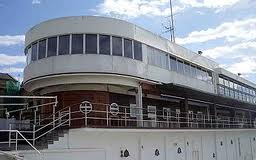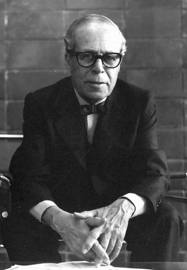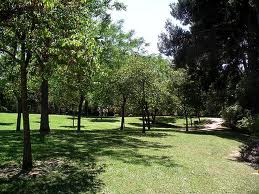Rationalist Architecture
The tragic consequences of the Great War left an indelible mark in the European psyche and inevitably changed the course of the development of intellectual movements emerged in the years leading up to World War I. One of the consequences we find during the 1920s is the dismissal of previously appealing theories of industrialisation of art, in favor instead of a more conceptual approach labeled Rationalism.

Part of the argument that gave rise to Rationalism was the uncontrolled proliferation of decorative elements in architectural design as the conceptual postulates launched towards the final third of the XIX century reached their full potential. On the other hand, the aggressive rhetoric put forward by avant-garde theorists who spoke of a purge of civilisation and the beauty of war was defeated by the full weight of its own argument, as a whole generation emerged from a senseless conflict with serious issues of orientation.
As the Bauhaus, main engine and general headquarters of European rationalism, moved from the small town of Weimar to the even smaller town of Dessau, in Spain emerged the first group or school of progressive creators with rationalist tendencies (the GATCPAC in Barcelona in 1928, later expanded to the GATEPAC in 1930).
Much like everything else in the course of the XX century in Spain, the natural development of Spanish Rationalism was truncated, cut short and essentially halted by the horrors of the Civil War of 1936-39. But in the years leading up to the break of war, two names distinguished themselves among the new generation of Spanish architects:
GATCPAC/GATEPAC

One of them was Josep Lluís Sert, leading member of the original GATCPAC, who put in practice the theoretical postulates discussed previously in his earliest creations, such as the residential building of Calle Muntaner in Barcelona, which boasts clean straight lines devoid of any ornament whatsoever superfluous to the actual purpose of the building. Following the Civil War, Sert would emigrate to the United States and further develop his style in different directions.
Another leading figure in the GATEPAC was Fernando García Mercadal, perhaps the very first promoter of Rationalism in Spain. Unlike many of the members of the group, García Mercadal had the opportunity and the vision to carry out in full a project that expressed the practicalities of the theory put forward by the movement. Such project was the now famous 'El rincón de Goya', an urban development in the city of Zaragoza.
Wedged right between the banks of the river Huerva and the edge of the Parque José Antonio Labordeta, 'El rincón de Goya' is located in a privileged spot to allow the sharpness of its lines, straight, austere and eminently utilitarian, to blend with the environment. For this very reason, García Mercadal is not only considered the first exponent of Rationalism in Spain, but also the most accomplished.

Apart from 'El rincón de Goya', Fernando García Mercadal was also active in the capital, and, as a matter of fact, you are sure to have walked along his creation in Madrid, as his layout of the Sabatini Gardens, which replaced the structure of the stables before the Royal Palace, is to this day a highly popular tourist destination.
The GATEPAC had three venues in Spain, one in Barcelona, one in Madrid and the third one, the northern branch, in San Sebastian. The most important representative of this third brach was José Manuel Aizpurúa, whose Nautical Club in that same city remains today an iconic symbol of Republican architecture. Built in the shape of a boat, the Nautical Club incorporates a versatile design that is simultaneously ornamental in its evocation of a boat and effective in the fulfilment of its purpose.
Like many of the members of the GATEPAC, Aizpurúa met his untimely death during the early days of the Civil War putting an end to his promising career. Most of those who survived emigrated away from the fascist government, and even those who stayed were forced to move away from rationalism during the first period of Franco's time, as the architecture endorsed by the officialdom became monumental, symbolic and eminently idiosyncratic.
